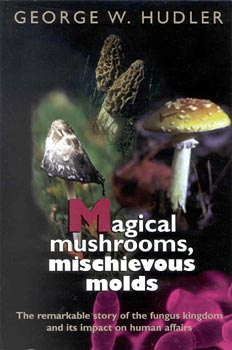
BACK COVER #
In this lively book, George Hudler leads us on a tour of an often-overlooked group of organisms, which differ radically from both animals and plants. Along the way the author stops to ponder the marvels of nature and the impact of mere microbes on the evolution of civilization. Hudler moves so easily from discussing human history to exploring scientific knowledge, all with a sense of humor and enthusiasm, that one can well understand why he is an award-winning teacher at Cornell university as well as nationally.BLURBS #
"An utterly delightful book that can be read by anyone who can hardly tell a shiitake from a morel. . . . Hudler makes an excellent brief on behalf of the fungi."-- The New York Times Book Review
"Thoroughly entertaining. . . . Hudler takes readers on an enthralling and informative tour of this much maligned kingdom."
-- Publishers Weekly
"George Hudler is clearly in love with his subject . . . he translates his fascination for all things fungal into a joyful and intelligent read. . . . People who normally shun biology should find it difficult to resist."
-- New Scientist
"[Hudler] presents a remarkable story of the fungi and their impact on human affairs in a highly readable style that will appeal to all. . . . A joy to read."
-- Choice
"Unseen, misunderstood, or regarded with suspicion, we cannot escape [fungi's] influence. [Hudler] explains why in this most readable book."
-- Nature

